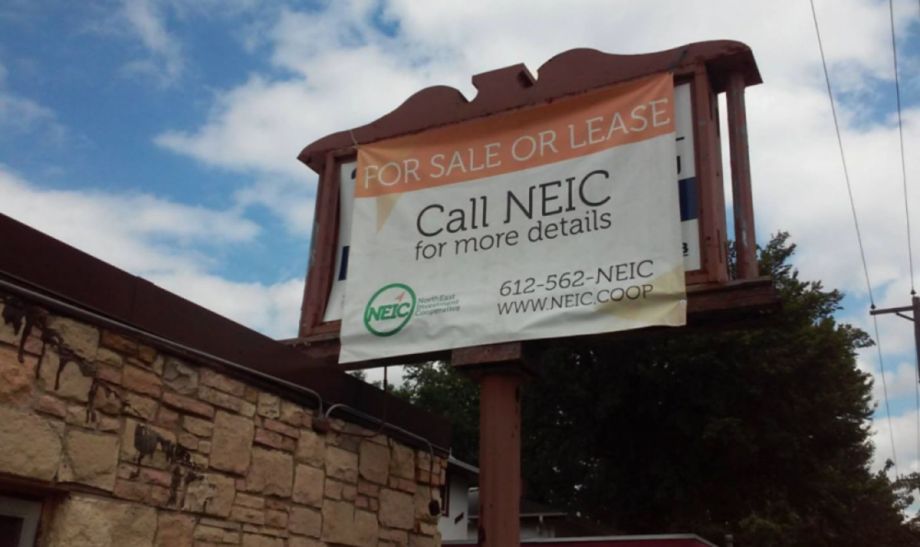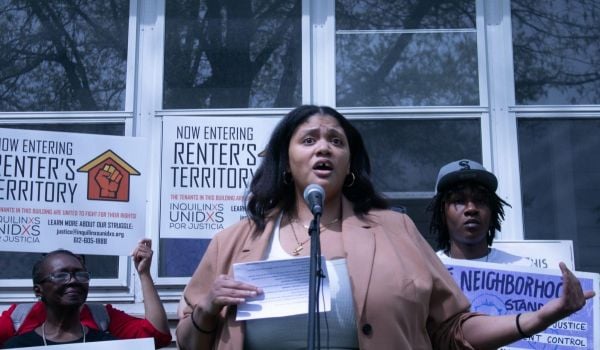While the Twin Cities continue to grapple with longstanding racial inequity, one working-class community has figured out a way to take back some control of their local economy. And their real estate investment cooperative, with some tweaks, could serve as a model for overcoming even greater economic marginalization.
Growing up in Northeast Minneapolis, Loren Schirber remembers the restaurant scene wasn’t very good. His family would always venture to other parts of the city for decent dining options.
Today, when he’s not overseeing one of 300 projects a year at his remodeling business, or spending time with his wife, Jill Wilhelmi, a corporate compliance lawyer, Schirber volunteers a lot of his time to developing commercial real estate in Northeast Minneapolis, as a board member of the NorthEast Investment Cooperative (NEIC).
“Nobody’s getting paid. It’s kind of crazy, when you think about it, we’re doing the same stuff as commercial developers, but no employees,” says Schirber.
The NEIC formed back in 2012, when a group of Northeast Minneapolis residents got tired of looking at poorly used or vacant properties in their neighborhood and waiting for traditional developers to come in. Many property owners, both residential and commercial, had long fled the area, Schirber says, and they were just milking whatever they could from what they had without reinvesting in the community.
Schirber and Wilhelmi joined a series of community conversations that eventually led to pooling their money and acquiring their first property as a group — a former discount mattress warehouse along Central Avenue, which used to be a main drag through the area. The property now features a bike repair shop, collectively owned craft beer brewery and a bakery.
The group is now finalizing acquisition and leasing out a second property, about 2 miles away (technically across the street from Minneapolis city limits). It’s a smaller property, and it’s not quite on a main drag like Central Avenue. Schirber admits they might not find a tenant that gets members excited, like a craft brewery or bakery. “It’s an opportunity to have a good local, sustainable business, but probably something a little more wholesale,” he says.
They’d hoped their second property would be closer to the first, but the market has changed.
“When we started the investment cooperative, it was about let’s rejuvenate Northeast, and five years later it’s a little different scenario,” says Schirber. Traditional developers have “discovered” the neighborhood. NEIC has been outbid on a few properties over the last few years.
“Now it’s not so much rejuvenation, it’s more looking to the future of how do we maintain local, independent businesses and encourage more local ownership of the property,” he adds.
Local control is key. It’s what differentiates an investment cooperative from a real estate investment trust, or REIT, or some other financial vehicle that allows many people to pool capital and invest in real estate. An investment cooperative, similar to consumer co-ops or producer co-ops or credit unions, is about a group of people from the same place pooling their resources to shape their community.
It makes sense for an investment cooperative to have emerged in the Twin Cities. It’s a region steeped in cooperative economics. The Twin Cities are home to Shared Capital Cooperative, one of the few community development financial institutions that specializes in lending to cooperatives nationwide.
Plus, “we’re one of those upper Midwestern states with a long tradition of agricultural co-ops,” says Leslie Watson, one of the four founding NEIC board members. Her day job is with a cooperatively owned consulting firm, where she mainly does consulting work with food co-ops all over the country. She is also on the board of the East Side Food Co-Op, down the block from the NEIC’s first property, where general manager Amy Fields is another NEIC founding board member.
On top of all that, Minnesota’s state regulatory framework has some unique features that are conducive to an investment cooperative.
“In some states, it may say you can form a cooperative for this purpose or that purpose, and that’s it,” Watson explains. “In Minnesota, you can form a cooperative for this, that or the other thing, or for any lawful business purpose.”
More importantly, Watson says, Minnesota’s state securities laws give cooperatives the freedom to raise capital without filing as much paperwork as might be required in other states.
“I work a lot with food co-ops around the U.S., a lot of them run capital campaigns for expansions, using community wealth to build their grocery stores, and some are able to do that more easily than others,” she says.
Minnesota is one of the easiest places to raise capital as a cooperative. In order to raise the money they need to acquire buildings, the NEIC has two options.
First, they can recruit new members, who must invest $1,000 to purchase an “A-share,” which also entitles the person to one vote on key decisions such as electing members or changing bylaws. By law, investment cooperative members must be Minnesota residents over the age of 18.
Second, members have the opportunity to purchase additional, non-voting, interest-bearing “C-shares” for $500 each or “D-shares” for $5,000 each.
When the NEIC’s board finds a building whose owner agrees to sell to them, they sign a letter of intent, giving themselves a deadline by which they must raise capital from new and existing members, most likely supplementing that with some financing from a community bank, before making the final offer to the seller. In their first transaction, NEIC worked with Northeast Bank, a community bank in Minneapolis.
The state regulatory structure, Watson says, requires little more than emailing Minnesota state securities regulators to inform them the cooperative is issuing a round of shares. The key is the cooperative membership structure — what the state wants to know is that investors have been adequately informed of the full risks of their investment. In Minnesota, becoming a member or being a member of a cooperative committed to certain principles satisfies that need.
“Having some level of regulation is a really good idea, but for our own community cooperative … we would not have been able to do this if we couldn’t have been a bunch of neighbors just doing it together,” Watson says.
The investment cooperative does provide members with an offering memorandum, based partly on the same template that Watson has used when consulting with food co-ops to raise capital. It discloses the people involved such as the board and their professional backgrounds, the financial performance of the cooperative so far, and other risks.
“So people can read it and they can know this is a whole bunch of amateurs. We’re buying crappy buildings that could have environmental problems, and your money could be lost,” Watson says.
Neighbors trust each other, and the investment cooperative allows them to leverage that trust for action, not to mention for a small financial return. In fiscal year 2015, NEIC paid 2 percent and 4 percent dividends on C- and D-shares, respectively. Members also earned $41.37 per $1,000 share in 2015.
NEIC’s progress so far has inspired others, such the NYC Real Estate Investment Cooperative, which is watching its city suffer a dual plague of vacant storefronts and skyrocketing commercial rents.
Showing that cooperative real estate development can work is one thing, and making it accessible is another, considering NEIC’s hefty $1,000 membership price. They do offer an installment plan for new members who can demonstrate need.
“We’re trying to raise capital, but at the same time it becomes a little problematic because it’s not accessible to a lot of people in our neighborhood,” Schirber says. “It’s something we’re struggling with, trying to make it more accessible or reachable.”
Watson wonders whether a philanthropy might consider searching for a group in a more marginalized neighborhood that could organize its own investment cooperative around a lower initial member investment threshold, then match them dollar for dollar, or at an even higher ratio, while adhering to the one-member-one-vote principle.
“The big thing to me would be the power piece,” says Watson. “What they have to be able to give up is the power that so often comes with being the one with money.”
The Equity Factor is made possible with the support of the Surdna Foundation.

Oscar is Next City's senior economic justice correspondent. He previously served as Next City’s editor from 2018-2019, and was a Next City Equitable Cities Fellow from 2015-2016. Since 2011, Oscar has covered community development finance, community banking, impact investing, economic development, housing and more for media outlets such as Shelterforce, B Magazine, Impact Alpha and Fast Company.
Follow Oscar .(JavaScript must be enabled to view this email address)

















